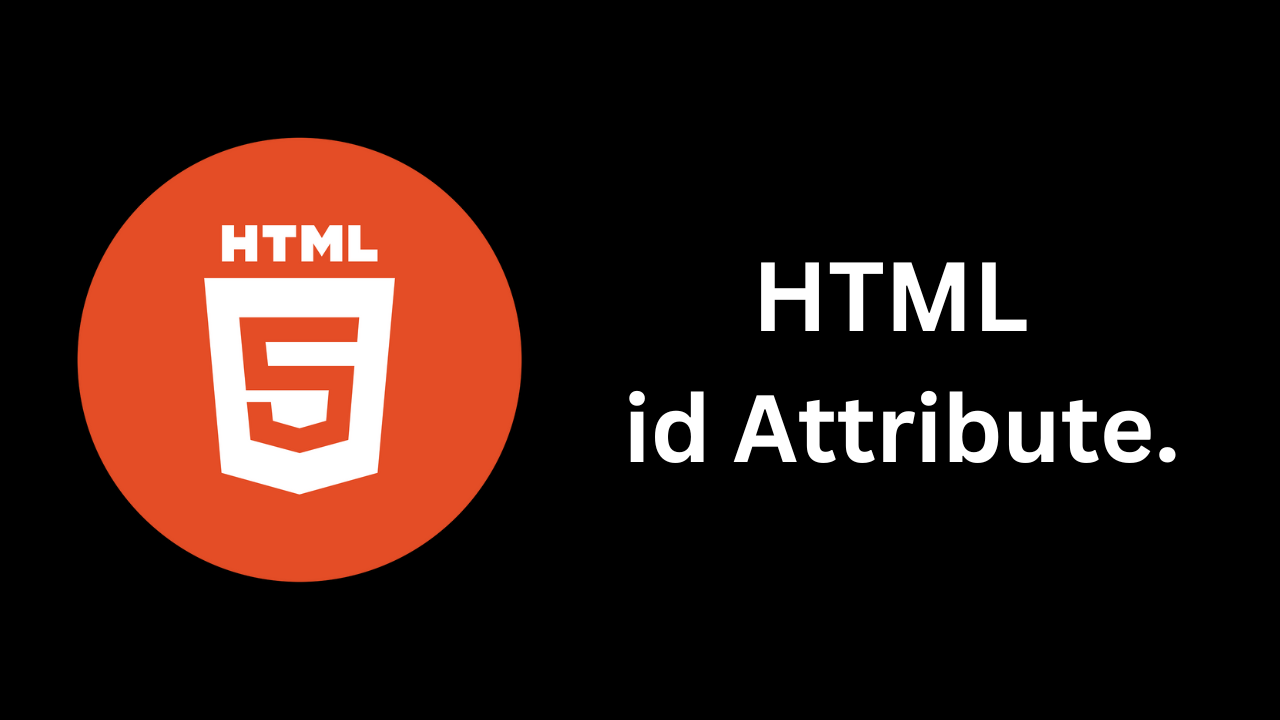Understanding the HTML id Attribute
 Shivani Patel
Shivani Patel
The id attribute in HTML is one of the most fundamental and widely used attributes. It plays a crucial role in web development, allowing developers to uniquely identify and style elements, manipulate them with JavaScript, and enhance accessibility. In this blog post, we will explore the id attribute in detail, covering its definition, usage, benefits, and best practices.
What is the id Attribute?
The id attribute is a global attribute in HTML that can be added to any HTML element. It is used to assign a unique identifier to that element. This unique identifier must be unique within the entire HTML document, meaning no two elements can share the same id value.
Syntax
The syntax for using the id attribute is simple:
<element id="uniqueID">Content</element>
For example:
<div id="header">Welcome to My Website</div>
Purpose of the id Attribute
The id attribute serves several purposes:
Uniqueness: It provides a way to uniquely identify an element, which is crucial for CSS styling and JavaScript manipulation.
Styling: Developers can use the
idselector in CSS to apply styles specifically to the element with thatid.JavaScript Manipulation: The
idcan be used to select elements in JavaScript, allowing developers to manipulate the DOM (Document Object Model) easily.Accessibility: Screen readers and other assistive technologies can utilize
idattributes to help users navigate web content.Fragment Identifiers: The
idattribute can be used in URLs to link directly to a specific section of a web page, enhancing navigation.
Using the id Attribute
Styling with CSS
Using the id attribute in CSS is straightforward. You prefix the id with a hash (#) symbol:
#header {
background-color: #f8f9fa;
color: #333;
padding: 20px;
text-align: center;
}
JavaScript Selection
In JavaScript, you can select an element by its id using methods like getElementById:
const header = document.getElementById("header");
header.innerText = "Hello, World!";
Linking with Fragment Identifiers
You can create links that navigate to specific sections of a page by using the id:
<a href="#header">Go to Header</a>
When the link is clicked, the browser scrolls to the element with the id of "header".
Benefits of Using the id Attribute
Simplicity: The
idattribute is easy to implement and understand, making it an essential tool for web developers.Efficiency: Accessing elements by
idis typically faster than selecting by class or tag, asidselections are optimized in browsers.Readability: Using meaningful
idnames enhances the readability of HTML documents, making it easier for developers to understand the structure of the page.Maintainability: When elements have unique identifiers, it becomes easier to manage and maintain code, especially in larger projects.
Best Practices for Using the id Attribute
Unique Values: Always ensure that
idvalues are unique within the document. Repeatingids can lead to unexpected behavior and accessibility issues.Meaningful Names: Use descriptive names that convey the purpose of the element. This practice aids in maintainability and improves the readability of your code.
Avoid Special Characters: Stick to alphanumeric characters, underscores, and hyphens in
idvalues. Avoid spaces and special characters to ensure compatibility across browsers.Use Lowercase: Although HTML is case-insensitive, using lowercase for
idvalues is a common convention that promotes consistency.Limit Use of Global IDs: While the
idattribute is global, consider using class attributes for styling shared among multiple elements to avoid over-reliance onid.
Conclusion
The id attribute is a powerful tool in HTML that enhances web development in various ways. By providing unique identifiers for elements, it enables precise styling, effective JavaScript manipulation, and improved accessibility. By following best practices and understanding its purpose, developers can harness the full potential of the id attribute, creating more efficient and user-friendly web applications.
Whether you're a beginner or an experienced developer, mastering the use of the id attribute is essential for building effective and organized web pages. Happy coding!
Subscribe to my newsletter
Read articles from Shivani Patel directly inside your inbox. Subscribe to the newsletter, and don't miss out.
Written by
